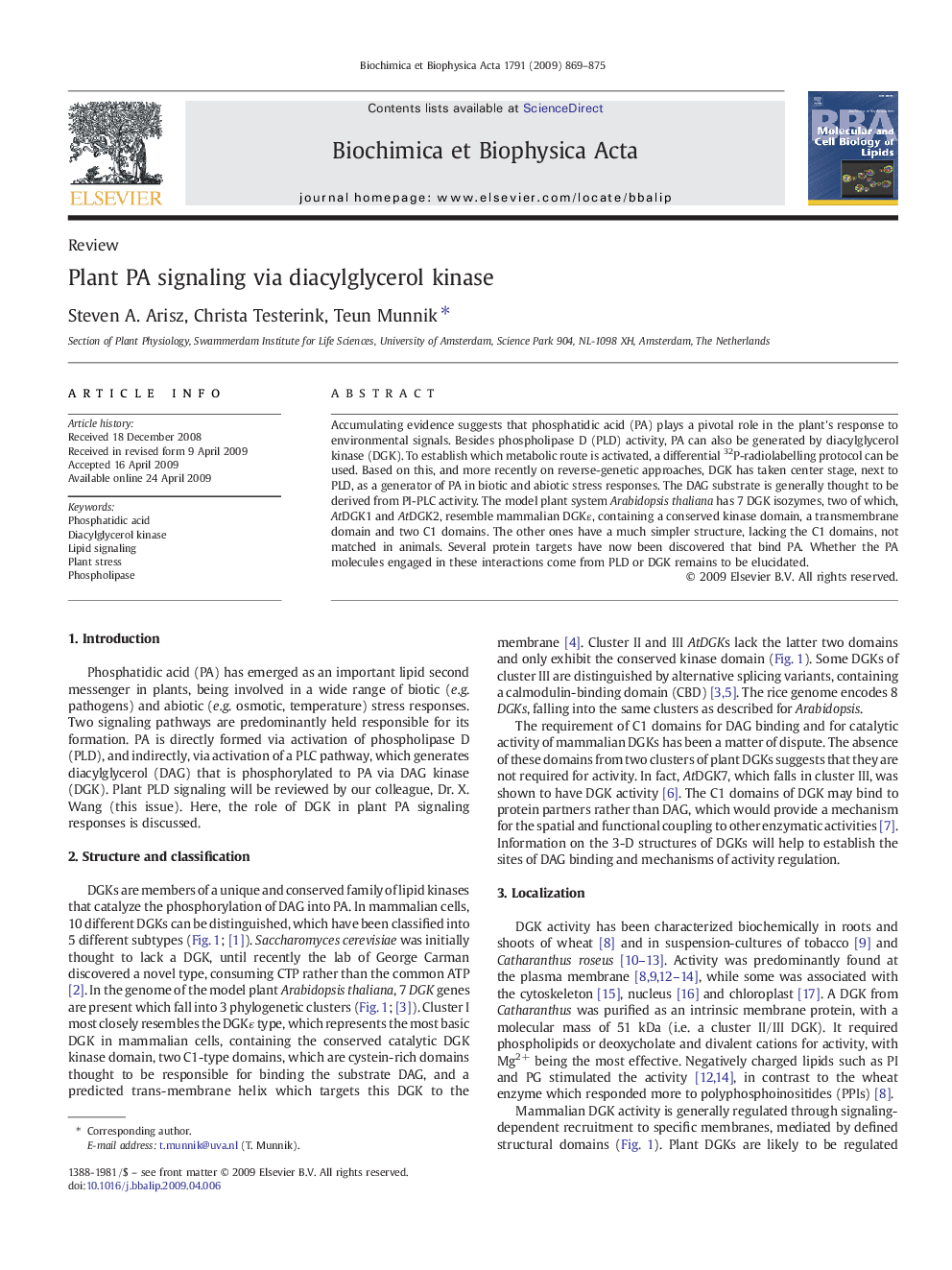| Article ID | Journal | Published Year | Pages | File Type |
|---|---|---|---|---|
| 1949839 | Biochimica et Biophysica Acta (BBA) - Molecular and Cell Biology of Lipids | 2009 | 7 Pages |
Accumulating evidence suggests that phosphatidic acid (PA) plays a pivotal role in the plant's response to environmental signals. Besides phospholipase D (PLD) activity, PA can also be generated by diacylglycerol kinase (DGK). To establish which metabolic route is activated, a differential 32P-radiolabelling protocol can be used. Based on this, and more recently on reverse-genetic approaches, DGK has taken center stage, next to PLD, as a generator of PA in biotic and abiotic stress responses. The DAG substrate is generally thought to be derived from PI-PLC activity. The model plant system Arabidopsis thaliana has 7 DGK isozymes, two of which, AtDGK1 and AtDGK2, resemble mammalian DGKɛ, containing a conserved kinase domain, a transmembrane domain and two C1 domains. The other ones have a much simpler structure, lacking the C1 domains, not matched in animals. Several protein targets have now been discovered that bind PA. Whether the PA molecules engaged in these interactions come from PLD or DGK remains to be elucidated.
